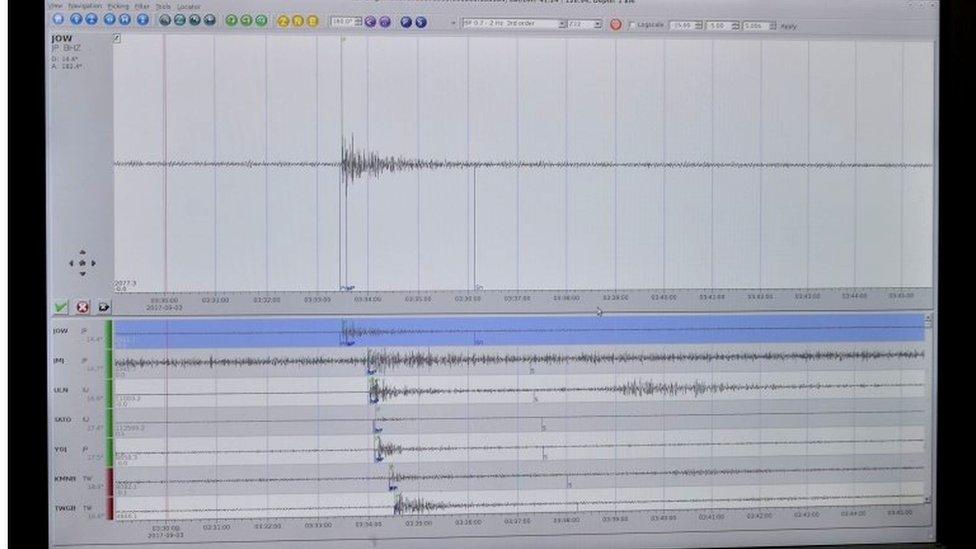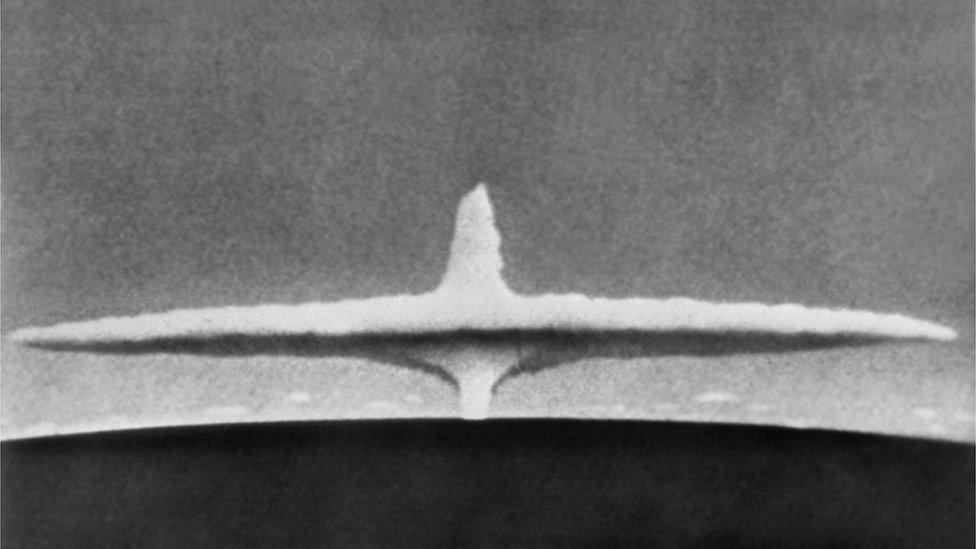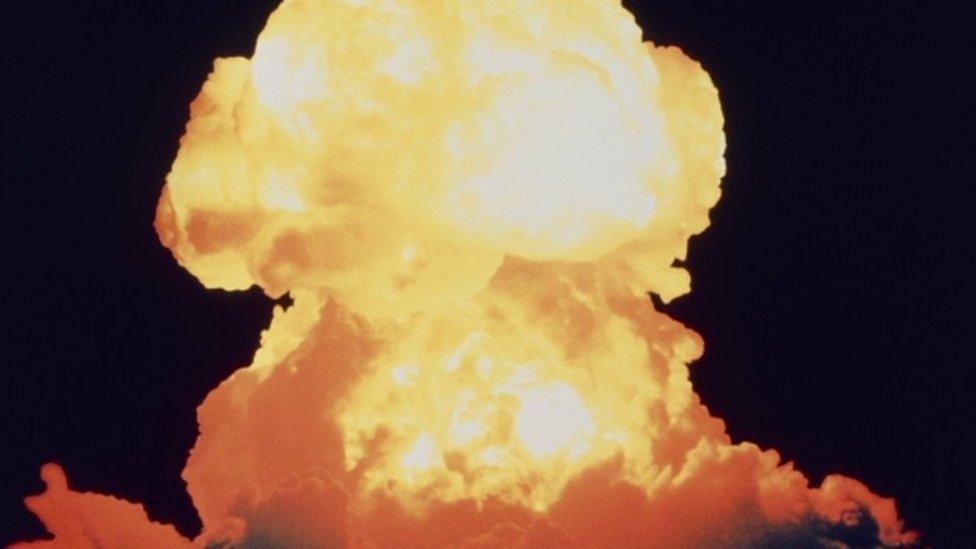North Korea's nuclear bomb: Can we work out its power?
- Published

The nuclear test that North Korea conducted on Sunday is thought to be the biggest ever conducted by Pyongyang. But what does this really mean and how will we find out more about the bomb? Physicist Ferenc Dalnoki-Veress explains.
A nuclear explosion is an extremely large explosion, so large that it shakes the ground just as an earthquake does and is detected by seismic sensors thousands of kilometres away.
The magnitude of the shaking is a measure of the immense energy released by the event. A parameter known as the body-wave magnitude (Mb) is used.

The US hydrogen bomb explosion in 1952 was the first test of a thermonuclear device
This is not a linear scale. A magnitude-6 event, for example, releases 30 times more energy than one of magnitude 5.
In all, 34 stations that are part of the Comprehensive Test Ban Treaty Organisation's (CTBTO) vast seismic monitoring network detected North Korea's explosion and it was so intense that it actually "saturated" the detectors, external. In other words for this monitoring network, which is sensitive to extremely small nuclear test explosions, this test was so high it essentially went off scale.
There have been widely differing calculations of the power of this blast, ranging from 50-150 kilotonnes. The force is measured in kilotonnes to indicate what would happen if one kilotonne of TNT was exploded.
The yields predicted so far vary because it depends on the precise formula used: which scaling relation of the yield as a function of body wave magnitude is used - and that depends on a variety of factors such as the depth and type of rock where the test was conducted, for example.
A recent scaling equation takes into account the depth at which an explosion took place. This was developed by Miao Zhang and Lianxing Wen , externalfrom the University of Science and Technology of China and Stony Brook and is appropriate for North Korea.
It means that we can begin to start guessing how powerful the blast would have been at various depths and this is what it looks like in a graph.

Modelling of the test site has led analysts, external to guess that blasts take place at depths as deep as 600 to 900 metres (1968-2952ft). If that is true, the yield is likely to have been at least 370 kilotonnes, which is vastly more than most estimates.
What this graph shows is that small differences in depth can make vast differences in yield or power. Compare this with the destructive force of Hiroshima: that came in at 15 kilotonnes.
This new estimate is consistent with the yield of a "two-stage" thermonuclear device, which is the type of bomb that North Korea claims that they have developed.
But more work will need to be done to determine the depth at which this test was conducted to reach consensus on the yield - that is the power - of the bomb.
Ferenc Dalnoki-Veress is scientist in residence at the Middlebury Institute of International studies at Monterey.
- Published3 September 2017

- Published3 September 2017

- Published6 January 2016
